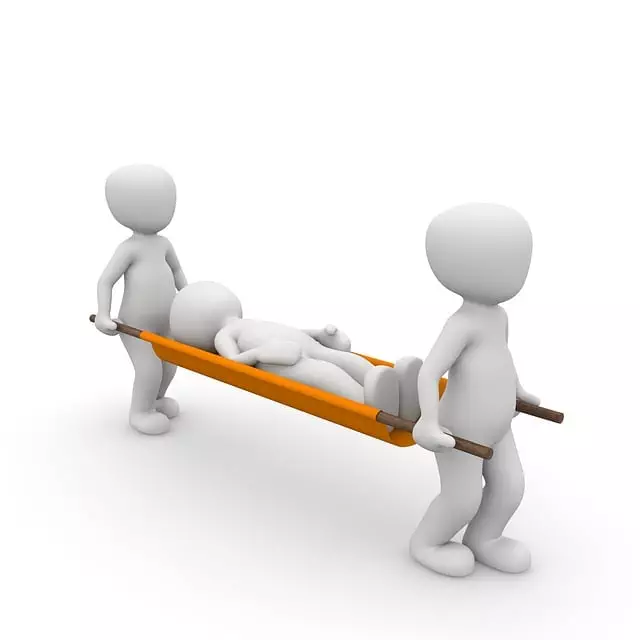Bicycle accidents in Manhattan are increasing due to growing popularity of cycling, but cyclists face challenges navigating dense traffic. While infrastructure improvements are made, traffic law enforcement remains crucial. The rise of rideshare services presents unique legal challenges, with complex liability determinations involving riders, drivers, and companies. Strict safety standards mandated by New York State Laws protect riders, and non-compliance can lead to costly litigation. Successful bicycle accident lawsuits in Manhattan have set precedents for rideshare safety litigation, emphasizing accountability for cyclist injuries caused by driver negligence.
In recent years, bicycle accidents in Manhattan have risen sharply, highlighting a growing concern for rider safety. This surge coincides with the proliferation of rideshare services, leading to complex legal implications. Understanding these dynamics is crucial for navigating liability and ensuring accountability. This article delves into the rising trend of bike accidents involving rideshares, explores relevant legal frameworks, and presents case studies demonstrating successful litigation in Manhattan’s bicycle accident lawsuits.
- Understanding Bicycle Accidents in Manhattan: A Growing Concern
- The Rise of Rideshare Services and Legal Implications
- Safety Standards and Regulatory Frameworks for Rideshares
- Navigating Liability: When Rideshare Drivers are at Fault
- Case Studies: Successful Litigation in Bicycle Accident Cases
Understanding Bicycle Accidents in Manhattan: A Growing Concern

Bicycle accidents in Manhattan have become a growing concern, with an increasing number of cyclists taking to the city’s streets. As more people opt for cycling as a mode of transportation due to its environmental benefits and cost-effectiveness, the risk of collisions rises. These accidents can result in severe injuries, including head trauma, fractures, and spinal damage, leading to significant medical expenses and a potential need for long-term care.
In Manhattan, where dense traffic and narrow streets are common, bicycle riders face unique challenges. They often share the road with larger vehicles, and intersections can be particularly dangerous spots for accidents to occur. In recent years, there has been a push for better infrastructure to support cyclists, including dedicated bike lanes and improved lighting, but enforcement of traffic laws remains crucial in preventing these incidents. A growing number of lawsuits related to bicycle accidents in Manhattan highlight the importance of understanding the rights of cyclists and the responsibilities of drivers to ensure safer roads for all users.
The Rise of Rideshare Services and Legal Implications

The rise of rideshare services has transformed the way people navigate urban areas, offering convenient transportation alternatives to traditional taxis. In New York City, including Manhattan, this shift is evident with a surge in bike-based rideshare options. While these services promote sustainability and efficiency, they also introduce unique legal challenges, particularly in the context of bicycle accidents. As riders and drivers traverse the bustling streets of Manhattan on bikes, the potential for collisions with vehicles, pedestrians, or fixed objects increases, leading to injuries and subsequent litigation.
Legal implications arise from the complex relationships involved—riders, drivers, and companies—each having distinct responsibilities and insurance considerations. In a bicycle accident lawsuit in Manhattan, determining liability often involves delving into contractual agreements, safety protocols, and local laws governing rideshare operations. This is especially pertinent when accidents occur, as riders seek compensation for medical expenses, property damage, and pain and suffering. Understanding the evolving legal landscape surrounding rideshare services is crucial to ensuring both consumer protection and responsible business practices in the dynamic world of on-demand transportation.
Safety Standards and Regulatory Frameworks for Rideshares

Rideshare companies operating in cities like Manhattan face stringent safety standards and regulatory frameworks due to the high volume of passengers and diverse road conditions. These regulations are designed to protect riders from potential hazards, including bicycle accidents, which have become a focal point for litigation. New York State Laws, along with local ordinances, mandate that rideshare vehicles meet specific safety criteria, such as regular maintenance, proper insurance coverage, and adherence to traffic rules.
The regulatory landscape also includes guidelines for driver training, background checks, and vehicle inspection protocols. Failure to comply with these standards can lead to legal repercussions, particularly in cases involving bicycle accidents. Manhattan, known for its dense bike culture and bustling streets, has seen an increase in lawsuits targeting rideshare companies over negligence in such incidents. This underscores the importance of operators adhering to safety protocols to mitigate risks and avoid costly litigation.
Navigating Liability: When Rideshare Drivers are at Fault

In rideshare litigation, determining liability is a complex task, especially in cases involving bicycle accidents in Manhattan. When a rideshare driver is at fault for an accident, passengers and other parties affected can file a lawsuit to seek compensation. These cases often revolve around negligence, where the driver’s failure to exercise reasonable care contributes to the incident. For instance, if a driver negligently fails to yield to a bicyclist or speeds through a pedestrian crossing, it can lead to severe injuries and subsequent legal repercussions.
Rideshare companies and their drivers have specific legal obligations to ensure passenger safety. This includes maintaining a safe speed, following traffic rules, and being vigilant in crowded urban areas like Manhattan. When these duties are breached, resulting in bicycle accidents or other harm, affected individuals can hold the driver and potentially the rideshare company accountable through litigation. Understanding local laws and regulations regarding ridesharing is crucial for navigating such legal matters effectively.
Case Studies: Successful Litigation in Bicycle Accident Cases

In recent years, several successful bicycle accident cases in Manhattan have set precedents for rideshare safety litigation. These lawsuits have focused on holding ride-sharing companies accountable for the injuries sustained by cyclists due to their drivers’ negligence. One notable case involved a cyclist who was hit by a driver distracted by their phone while navigating a busy city street. The plaintiff’s attorney argued that the rideshare company should be liable, as they had a duty to ensure their drivers followed traffic rules and maintained safe driving habits. The court agreed, awarding substantial compensation to the injured cyclist.
These bicycle accident cases have shown that riders can seek justice and financial relief when their safety is compromised. By examining similar successful litigation, future plaintiffs in Manhattan can navigate the legal system more effectively, advocating for improved safety standards and driving habits within the rideshare industry.
In conclusion, while rideshare services have revolutionized urban transportation in Manhattan, they also introduce unique safety challenges, particularly regarding bicycle accidents. Understanding the legal implications, safety standards, and liability frameworks is crucial for both riders and drivers. By examining successful case studies, it becomes evident that thorough litigation can hold rideshare companies accountable when their drivers are at fault. Awareness of these issues and advocacy for stronger safety measures are essential steps towards making Manhattan’s roads safer for everyone, especially cyclists, and ensuring just compensation through Bicycle Accidents and Lawsuit Manhattan processes.
